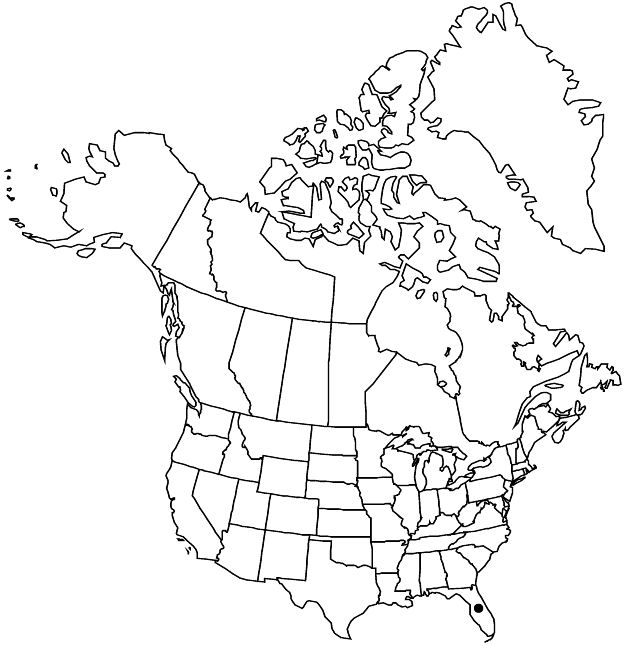Phyllanthus acidus
U.S.D.A. Bur. Pl. Industr. Bull. 148: 17. 1909.
Trees, monoecious, 20–100 dm; branching phyllanthoid. Stems: main-stems and ultimate branchlets terete, not winged, glabrous. Leaves on main-stems deciduous, spiral, scalelike; stipules not auriculate, dark-brown. Leaves on ultimate branchlets deciduous with branchlets, distichous, well developed; stipules not auriculate, dark-brown; blade broadly ovate to ovatelanceolate, (40–) 50–90 × (20–) 25–45 mm, base obtuse or rounded, apex acute, both surfaces glabrous. Inflorescences cymules on leafless short-shoots, on old wood bisexual with 1–9 pistillate flowers and 25–40 staminate flowers, on new growth bisexual on proximal shoots with 1–2 pistillate flowers and 8–12 staminate flowers, staminate on distal shoots with 8–12 flowers. Pedicels: staminate 1.5–3 mm, pistillate spreading in fruit, 2.3–5 (–6) mm. Staminate flowers: sepals 4, reddish purple with pink to white margins, flat, 1.1–1.4 (–1.5) mm; nectary extrastaminal, 4 glands; stamens (3–) 4, filaments distinct. Pistillate flowers: sepals 4, green to reddish purple with pink to white margins, flat, (1–) 1.2–1.4 mm, 1-veined; nectary annular, 4-lobed. Drupes greenish yellow to white, (12–) 15–20 (–25) mm diam., smooth. Seeds uniformly brown, 3.3–3.5 mm, smooth. 2n = 26 (West Indies).
Phenology: Flowering and fruiting year-round.
Habitat: Disturbed sites.
Elevation: 0–10 m.
Distribution

Introduced; Fla., South America (Brazil), also in Mexico, West Indies, Central America, elsewhere in South America, Asia, Africa
Discussion
Phyllanthus acidus is widely cultivated in the tropics and subtropics for its edible drupes. In the flora area, it is known sparingly from Collier and Monroe counties.
Selected References
None.
Lower Taxa
"elongating" is not a number."connate" is not a number."/2" is not declared as a valid unit of measurement for this property.